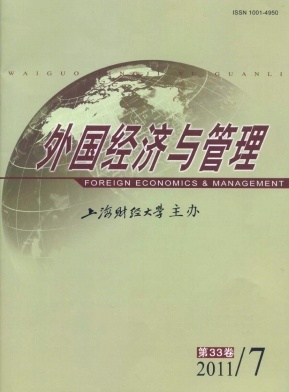原产国刻板印象逆转研究前沿探析
外国经济与管理 2011 年 第 33 卷第 07 期, 页码:34 - 40
摘要
参考文献
摘要
在全球化市场上,原产国刻板印象长期制约着消费者对新兴市场经济国家产品的评价。随着新兴市场经济国家的崛起,当前理论界和实务界对原产国刻板印象逆转问题的关注不断升温,但现有研究尚未深入探讨原产国刻板印象逆转的内在机理。本文基于原产国刻板印象可以逆转这一视角,论述了原产国刻板印象可以逆转的理论依据及研究突破,并基于刻板表征理论剖析了原产国刻板印象的逆转机制,最后指出了促进原产国刻板印象逆转的营销战略及未来研究方向。
[1]Maheswaran,D.Country of origin as a stereotype:Effects of consumer expertise and attribute strength on product evaluations[J].Journal of Consumer Research,1994,21(2):354-365.
[2]Gurhan-Canli,Z,and Maheswaran,D.Determinants of country-of-origin evaluations[J].Journal of Consumer Research,2000,27(1):96-108.
[3]克里斯托夫.巴特利特,休曼特拉.戈沙尔.全球角逐:后发未必后至[J].哈佛商业评论(中文版),2003,(6):52-63.
[4]Johansson,J K,Ronkainen,I A,and Czinkota,M R.Negative country-of-origin effects:The case of the New Russia[J].Jour-nal of International Business Studies,1994,25(1):157-176.
[5]Lim,J,Darley,W K,and Summers,J O.An assessment of country of origin effects under alternative presentation formats[J].Journal of the Academy of Marketing Science,1994,22(3):274-282.
[6]Gurhan-Canli,Z,and Maheswaran,D.Cultural variations in country of origin effects[J].Journal of Marketing Research,2000,37(8):309-317.
[7]Maurer,K L,Park,B,and Rothbart,M.Subtyping versus subgrouping processes in stereotype representation[J].Journal ofPersonality and Social Psychology,1995,69(5):812-824.
[8]Richards,Z,and Hewstone,M.Subtyping and subgrouping:Processes for the prevention and promotion of stereotype change[J].Personality and Social Psychology Review,2001,5(1):52-73.
[9]van Osselaer,S M J,and Janiszewski,C.Two ways of learning brand associations[J].Journal of Consumer Research,2001,28(2):202-223.
[10]Chattalas,M,Kramer,T,and Takada,H.The impact of national stereotypes on the country of origin effect:A conceptualframework[J].International Marketing Review,2007,25(1):54-74.
[11]Tse,D K,and Lee,W.Removing negative country images:Effects of decomposition,branding,and product experience[J].Journal of International Marketing,1993,1(4):25-48.
[12]Leclerc,F,Schmitt,B H,and Dube,L.Foreign branding and its effects on product perceptions and attitudes[J].Journal ofMarketing Research,1994,31(5):263-270.
[13]Lotz,S,and Hu,M.Diluting negative country of origin stereotypes:A social stereotype approach[J].Journal of MarketingManagement,2001,17(1/2):105-135.
[14]Liu,S S,and Johnson,K F.The automatic country-of-origin effects on brand judgments[J].Journal of Advertising,2005,34(1):87-97.
[15]Chu,P Y,Chang,C C,Chen,C Y,and Wang,T Y.Countering negative country-of-origin effects:The role of evaluationmode[J].European Journal of Marketing.2010,44(7/8):1 055-1 076.
[16]王沛.内隐刻板印象研究综述[J].心理科学进展,2002,10(1):97-101.
[17]Bless,H,Schwarz,N,Bodenhausen,G V,and Thiel,L.Personalized versus generalized benefits of stereotype disconfirma-tion:Trade-offs in the evaluation of atypical exemplars and their social groups[J].Journal of Experimental Social Psychology,2001,37(5):386-397.
[18]普拉尚特.卡莱,哈比尔.辛格,阿南德.拉曼.海外收购的伙伴策略[J].哈佛商业评论(中文版),2010,(2):100-110.
[19]Monga,A B,and John,D R.What makes brands elastic?The influence of brand concept and styles of thinking on brand exten-sion evaluation[J].Journal of Marketing,2010,74(5):80-92.
[20]王海忠,刘红艳.品牌杠杆——整合资源赢得品牌领导地位的新模式[J].外国经济与管理,2009,31(5):23-29.
[2]Gurhan-Canli,Z,and Maheswaran,D.Determinants of country-of-origin evaluations[J].Journal of Consumer Research,2000,27(1):96-108.
[3]克里斯托夫.巴特利特,休曼特拉.戈沙尔.全球角逐:后发未必后至[J].哈佛商业评论(中文版),2003,(6):52-63.
[4]Johansson,J K,Ronkainen,I A,and Czinkota,M R.Negative country-of-origin effects:The case of the New Russia[J].Jour-nal of International Business Studies,1994,25(1):157-176.
[5]Lim,J,Darley,W K,and Summers,J O.An assessment of country of origin effects under alternative presentation formats[J].Journal of the Academy of Marketing Science,1994,22(3):274-282.
[6]Gurhan-Canli,Z,and Maheswaran,D.Cultural variations in country of origin effects[J].Journal of Marketing Research,2000,37(8):309-317.
[7]Maurer,K L,Park,B,and Rothbart,M.Subtyping versus subgrouping processes in stereotype representation[J].Journal ofPersonality and Social Psychology,1995,69(5):812-824.
[8]Richards,Z,and Hewstone,M.Subtyping and subgrouping:Processes for the prevention and promotion of stereotype change[J].Personality and Social Psychology Review,2001,5(1):52-73.
[9]van Osselaer,S M J,and Janiszewski,C.Two ways of learning brand associations[J].Journal of Consumer Research,2001,28(2):202-223.
[10]Chattalas,M,Kramer,T,and Takada,H.The impact of national stereotypes on the country of origin effect:A conceptualframework[J].International Marketing Review,2007,25(1):54-74.
[11]Tse,D K,and Lee,W.Removing negative country images:Effects of decomposition,branding,and product experience[J].Journal of International Marketing,1993,1(4):25-48.
[12]Leclerc,F,Schmitt,B H,and Dube,L.Foreign branding and its effects on product perceptions and attitudes[J].Journal ofMarketing Research,1994,31(5):263-270.
[13]Lotz,S,and Hu,M.Diluting negative country of origin stereotypes:A social stereotype approach[J].Journal of MarketingManagement,2001,17(1/2):105-135.
[14]Liu,S S,and Johnson,K F.The automatic country-of-origin effects on brand judgments[J].Journal of Advertising,2005,34(1):87-97.
[15]Chu,P Y,Chang,C C,Chen,C Y,and Wang,T Y.Countering negative country-of-origin effects:The role of evaluationmode[J].European Journal of Marketing.2010,44(7/8):1 055-1 076.
[16]王沛.内隐刻板印象研究综述[J].心理科学进展,2002,10(1):97-101.
[17]Bless,H,Schwarz,N,Bodenhausen,G V,and Thiel,L.Personalized versus generalized benefits of stereotype disconfirma-tion:Trade-offs in the evaluation of atypical exemplars and their social groups[J].Journal of Experimental Social Psychology,2001,37(5):386-397.
[18]普拉尚特.卡莱,哈比尔.辛格,阿南德.拉曼.海外收购的伙伴策略[J].哈佛商业评论(中文版),2010,(2):100-110.
[19]Monga,A B,and John,D R.What makes brands elastic?The influence of brand concept and styles of thinking on brand exten-sion evaluation[J].Journal of Marketing,2010,74(5):80-92.
[20]王海忠,刘红艳.品牌杠杆——整合资源赢得品牌领导地位的新模式[J].外国经济与管理,2009,31(5):23-29.
引用本文
江红艳, 王海忠. 原产国刻板印象逆转研究前沿探析[J]. 外国经济与管理, 2011, 33(7): 34–40.
导出参考文献,格式为:





 7437
7437  262
262

